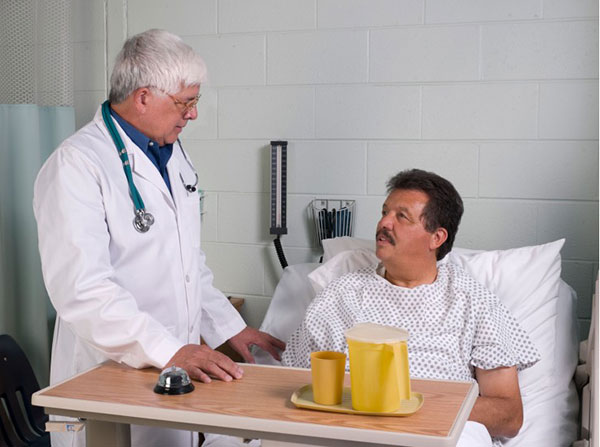
A sharp rise in testis cancer among Latinos took place between 2006 and 2012. (Photo/iStock)
For the first time in Los Angeles County history, more Latino than white men are being diagnosed with testicular cancer, a malady once regarded as a white man’s disease.
There were 931 Latino men diagnosed with testicular cancer between 2006 and 2012 compared to 744 white men, according to a regional cancer report card administered by Keck Medicine of USC and the USC Norris Comprehensive Cancer Center.
The change is the result of a sharp rise in testis cancer among Latinos, combined with demographic shifts that make Latinos the majority ethnicity in Los Angeles County. The county now is home to 9 percent of the nation’s Hispanic population.
The data comes from Cancer in Los Angeles County: Trends by Race/Ethnicity 1976-2012. Released on Aug. 15, the book includes every cancer diagnosis in the region — more than 1.3 million — over the past 37 years.
Rates of testicular cancer worldwide have steadily increased for more than a century, but the disease is still relatively uncommon, highly treatable and usually curable.
Victoria Cortessis, PhD, associate professor of clinical preventive medicine at the Keck School of Medicine of USC, said assimilating into the American lifestyle may play a role in rising testicular cancer rates among Latino men and other ethnicities.
Why are rates of testicular cancer on the rise?
Some environmental causes of testis cancer have probably become more common over time; however, the environmental risk factors responsible for increasing testis cancer rates have not been established. Some hypothesized risk factors are hormonal in nature, including estrogenic residues of chemical pesticides. Additionally, use of marijuana by adolescents and very young men has been found to be associated with a subtype of testis cancer, but a causal link has not been fully established.
Testicular cancer is most common among men ages 15 to 30. People in this age group usually don’t think they will get cancer and probably don’t get tested for it much. What advice do you have for them?
This diagnosis is usually made after a young man notices a mass in one of his testicles; sometimes patients describe a sensation of heaviness. Men should report any of these changes to a health care provider. At present there is no clinical test for early detection that has been shown to improve outcomes, so screening for testis cancer is not recommended.
White American men are four to five times more likely than other ethnicities to get testicular cancer. Why have testicular cancer rates recently risen sharply for Latino and Japanese men?
This key question requires further research; however, data suggest that one or more environmental exposures that become more common with acculturation may be responsible.
Are there hormones or supplements geared toward men that increase testicular cancer risk?
It has been suggested that use of anabolic steroids may predispose men to testis cancer, but this has not been studied rigorously.
What could boys and men do to reduce their risk of testicular cancer?
Until environmental risk factors are more firmly established, preventive measures cannot be well defined. However, young men may want to consider the possible role of marijuana when deciding whether to use this substance.
Additionally, testis cancer is more frequent in men who were born with an undescended testicle (also called cryptorchidism). Although the exact mechanism linking these two conditions is not yet known, infants born with an undescended testicle should receive specialized care for this disorder beginning in the first months of life.
When someone is diagnosed with testis cancer, what should he do?
The great majority of patients survive this malignancy. Physicians who do not specialize in testis cancer may not see much of this disease because it is rarer than malignancies suffered by older age groups.
Patients diagnosed with testis cancer may want to consider treatment or a second consult about their treatment plan at a specialized center. Major treatment goals should include curing the cancer and minimizing overtreatment, since long-term side effects can occur, and these are likely due, at least in part, from chemotherapy.
by Zen Vuong